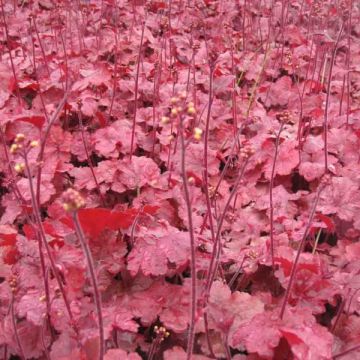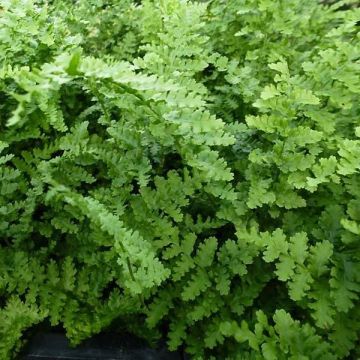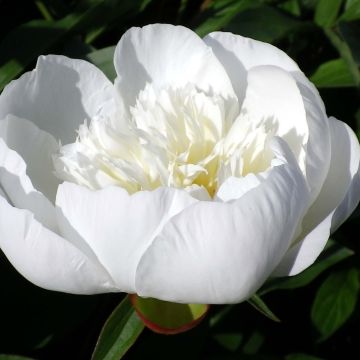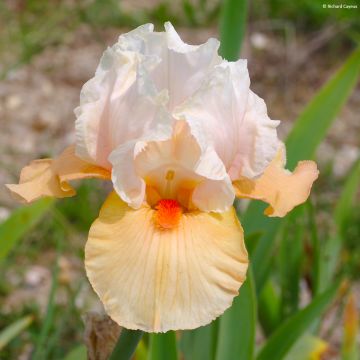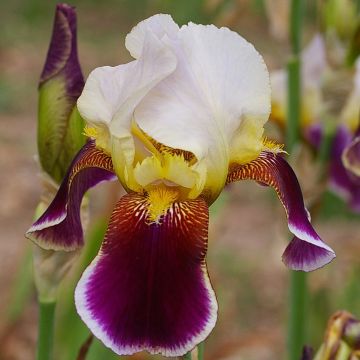

Houstonia caerulea Millard's Variety - Quaker ladies


Houstonia caerulea Millard's Variety - Quaker ladies


Houstonia caerulea Millard's Variety - Quaker ladies


Houstonia caerulea Millard's Variety - Quaker ladies
Houstonia caerulea Millard's Variety - Quaker ladies
Houstonia caerulea Millard's Variety
Quaker ladies
Delicate plant that I have never managed to keep alive.
Louis, 23/06/2024
This item cannot be shipped to the selected country
Delivery charge from €5.90
More information
Schedule delivery date,
and select date in basket
This plant carries a 12 months recovery warranty
More information
We guarantee the quality of our plants for a full growing cycle, and will replace at our expense any plant that fails to recover under normal climatic and planting conditions.
From €5.90 for pickup delivery and €6.90 for home delivery
Express home delivery from €8.90.
Does this plant fit my garden?
Set up your Plantfit profile →
Description
Houstonia caerulea Millard's Variety is a creeping perennial plant that is unjustly unknown. On an acidic, moist, and rich soil, this blue Houstonia forms a dense, evergreen carpet in winter, which truly disappears under a cloud of tiny lilac-blue stars in late spring. Very pretty in a moist rockery or between the stones of paving, this flowering carpet perfectly highlights all spring blooms, especially those of daffodils and tulips. You can also place the blue Houstonia at the base of plants grown in pots or containers.
Houstonia caerulea Millard's Variety belongs to the family of Rubiaceae. It is a cultivar derived from the blue Houstonia, native to the eastern and northeastern parts of North America. In nature, this small plant is found in meadows, gravel pits, and moist rocky slopes, in full sun or partial shade, always on acidic to neutral soils. It is a creeping perennial plant with growth that does not exceed 10 to 15cm (4 to 6in) in height. It consists of basal rosettes grouped in a dense carpet. The leaves, not exceeding 1cm (0in), are broad at the tip and tapered to the base, slightly villous, and fairly dark green. Flowering begins in April or May, depending on the climate, and lasts for about 3 weeks. From the foliage emerge numerous slender floral stems, each bearing a bright mauve-blue flower with white and yellow markings in the centre. The flowers are so numerous that they overwhelm the foliage. This nectar-rich flowering is visited by bees and butterflies. After pollination, the plant produces seeds that can self-sow in light, acidic, and moist soil.
Houstonia caerulea Millard's Variety has many uses as long as it has acidic, moist, and well-drained soil. Originating from mountainous regions, it dislikes limestone, excessively hot climates, and arid conditions. It is placed in full sun or partial shade between stones near water sources, in a large rockery, along pathways, between stepping stones, in bare patches of a short grass meadow, at the base of trees, in slightly damp areas...
Report an error about the product description
Houstonia caerulea Millard's Variety - Quaker ladies in pictures




Flowering
Foliage
Plant habit
Botanical data
Houstonia
caerulea
Millard's Variety
Rubiaceae
Quaker ladies
Cultivar or hybrid
Other Ground cover perennials
Planting and care
Plant the blue houstonia in full sun or partial shade in moist to damp, well-drained, lime-free (acid to neutral) soil. Mix your soil with compost and lime-free gravel to improve drainage if necessary. It is an excellent hardy rockery plant. It wilts under excessively hot climates in summer and does not tolerate limestone. Multiplication is easily done by pulling up small clumps in spring and replanting them elsewhere.
Planting period
Intended location
Care
-
, onOrder confirmed
Reply from on Promesse de fleurs
Spring flowering perennials
Haven't found what you were looking for?
Hardiness is the lowest winter temperature a plant can endure without suffering serious damage or even dying. However, hardiness is affected by location (a sheltered area, such as a patio), protection (winter cover) and soil type (hardiness is improved by well-drained soil).

Photo Sharing Terms & Conditions
In order to encourage gardeners to interact and share their experiences, Promesse de fleurs offers various media enabling content to be uploaded onto its Site - in particular via the ‘Photo sharing’ module.
The User agrees to refrain from:
- Posting any content that is illegal, prejudicial, insulting, racist, inciteful to hatred, revisionist, contrary to public decency, that infringes on privacy or on the privacy rights of third parties, in particular the publicity rights of persons and goods, intellectual property rights, or the right to privacy.
- Submitting content on behalf of a third party;
- Impersonate the identity of a third party and/or publish any personal information about a third party;
In general, the User undertakes to refrain from any unethical behaviour.
All Content (in particular text, comments, files, images, photos, videos, creative works, etc.), which may be subject to property or intellectual property rights, image or other private rights, shall remain the property of the User, subject to the limited rights granted by the terms of the licence granted by Promesse de fleurs as stated below. Users are at liberty to publish or not to publish such Content on the Site, notably via the ‘Photo Sharing’ facility, and accept that this Content shall be made public and freely accessible, notably on the Internet.
Users further acknowledge, undertake to have ,and guarantee that they hold all necessary rights and permissions to publish such material on the Site, in particular with regard to the legislation in force pertaining to any privacy, property, intellectual property, image, or contractual rights, or rights of any other nature. By publishing such Content on the Site, Users acknowledge accepting full liability as publishers of the Content within the meaning of the law, and grant Promesse de fleurs, free of charge, an inclusive, worldwide licence for the said Content for the entire duration of its publication, including all reproduction, representation, up/downloading, displaying, performing, transmission, and storage rights.
Users also grant permission for their name to be linked to the Content and accept that this link may not always be made available.
By engaging in posting material, Users consent to their Content becoming automatically accessible on the Internet, in particular on other sites and/or blogs and/or web pages of the Promesse de fleurs site, including in particular social pages and the Promesse de fleurs catalogue.
Users may secure the removal of entrusted content free of charge by issuing a simple request via our contact form.
The flowering period indicated on our website applies to countries and regions located in USDA zone 8 (France, the United Kingdom, Ireland, the Netherlands, etc.)
It will vary according to where you live:
- In zones 9 to 10 (Italy, Spain, Greece, etc.), flowering will occur about 2 to 4 weeks earlier.
- In zones 6 to 7 (Germany, Poland, Slovenia, and lower mountainous regions), flowering will be delayed by 2 to 3 weeks.
- In zone 5 (Central Europe, Scandinavia), blooming will be delayed by 3 to 5 weeks.
In temperate climates, pruning of spring-flowering shrubs (forsythia, spireas, etc.) should be done just after flowering.
Pruning of summer-flowering shrubs (Indian Lilac, Perovskia, etc.) can be done in winter or spring.
In cold regions as well as with frost-sensitive plants, avoid pruning too early when severe frosts may still occur.
The planting period indicated on our website applies to countries and regions located in USDA zone 8 (France, United Kingdom, Ireland, Netherlands).
It will vary according to where you live:
- In Mediterranean zones (Marseille, Madrid, Milan, etc.), autumn and winter are the best planting periods.
- In continental zones (Strasbourg, Munich, Vienna, etc.), delay planting by 2 to 3 weeks in spring and bring it forward by 2 to 4 weeks in autumn.
- In mountainous regions (the Alps, Pyrenees, Carpathians, etc.), it is best to plant in late spring (May-June) or late summer (August-September).
The harvesting period indicated on our website applies to countries and regions in USDA zone 8 (France, England, Ireland, the Netherlands).
In colder areas (Scandinavia, Poland, Austria...) fruit and vegetable harvests are likely to be delayed by 3-4 weeks.
In warmer areas (Italy, Spain, Greece, etc.), harvesting will probably take place earlier, depending on weather conditions.
The sowing periods indicated on our website apply to countries and regions within USDA Zone 8 (France, UK, Ireland, Netherlands).
In colder areas (Scandinavia, Poland, Austria...), delay any outdoor sowing by 3-4 weeks, or sow under glass.
In warmer climes (Italy, Spain, Greece, etc.), bring outdoor sowing forward by a few weeks.


































